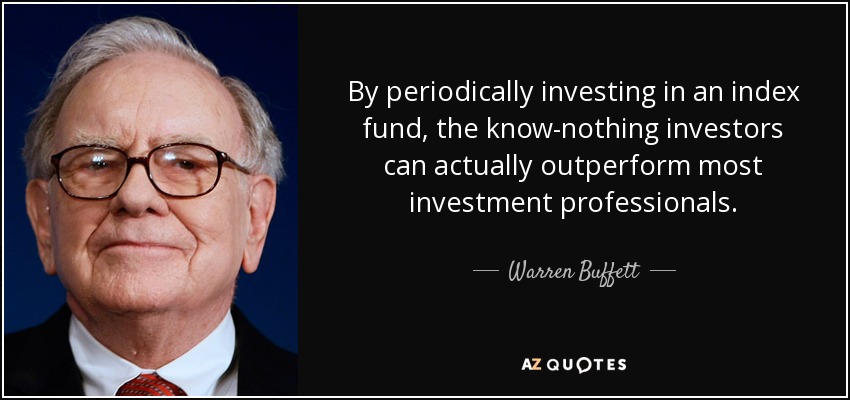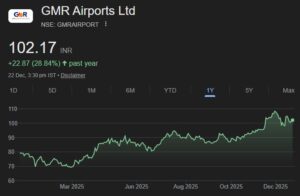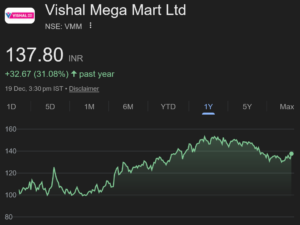
Are stocks overvalued at Nifty 10,000?
First, we have to deal with the seminal question that is bothering all novice investors as to whether the peak of 10,000 reached by the Nifty today indicates that stocks are overvalued and whether they should bail out before the market crashes.
Anoop Bhaskar, the illustrious fund manager of IDFC Mutual Fund, has answered the concern with his customary clarity of thought:
“How do you see the current mid-cap valuations? Aren’t they stretched?
Optically, the P/E ratios of mid- and small-cap indices look much higher than that of the Nifty 50 Index as there are several loss-making companies (PSU banks, commodity stocks) which have resulted in earnings looking artificially lower. However, if we were to exclude the loss-making companies and look at the positive P/E, then the valuations are not as expensive as the headline P/E. Further, higher valuation of the mid- and small-cap segment is due to higher expected earnings growth. Also, many loss-making companies are expected to turn around and post profits. And therefore, the future P/E is expected to shrink. In view of potential economic turnaround which can result in significant earnings growth, current valuations don’t appear stretched.”
Anoop Bhaskar’s explanation is soothing and also makes sense. Novice investors tend to look at the trailing P/E and get paranoid that the stock is expensive.
However, one has to look at the forward P/E which incorporates the earnings from expansions etc and then take a decision on whether the valuation are stretched or not.

(Jubilant punters throng Dalal Street)
Nifty at 10,000 gives a pathetic return of 8% CAGR over 10 years ….
Nooresh Merani, an expert on technical analysis, has made the surprising revelation that the level of 10,000 attained by the Nifty is nothing to be jubilant about because it implies a pathetic return of only 8% over ten long years.
#Nifty at #10000 is it that great a return over last few years to be happy about ? 11% since inception !! Focus on #Stocks pic.twitter.com/p46RyUbsvt
— Nooresh Merani (@nooreshtech) July 25, 2017
Even over a long period of twenty years, the return is only 11% which is utterly disappointing to say the least.
… But Warren Buffett advocates investment in low-cost Index funds …
Warren Buffett’s consistent advice is that novice investors should invest in low-cost Index funds and not go scouting for individual stocks.
Prima facie, it appears that this advice is not applicable to India.
Instead, the practice that novice investors have been following of cloning the stock picks of eminent wizards appears to be a sensible practice.
Of course, there are bound to be mishaps from time to time in following the cloning method. However, the overall result is certainly satisfactory.

Even random portfolios have given CAGR returns of 25-40%
Nooresh Merani conducted an experiment to determine whether a portfolio which is constructed with random stocks has a chance of outperforming the Nifty and other Indices.
The results of the experiment are astonishing.
4 year Return 1st July 2013 to 30th June 2017
| 01-07-2013 | 30-06-2017 | ||
| Portfolio | Initial Equity | End Equity | % Returns |
| Random Portfolio 1 | 1000000 | 3501187 | 250.12% |
| Random Portfolio 2 | 1000000 | 2564909 | 156.49% |
| Random Portfolio 3 | 1000000 | 3951002 | 295.10% |
| Random Portfolio 4 | 1000000 | 3590804 | 259.08% |
| Random Portfolio 5 | 1000000 | 3878606 | 287.86% |
| Average Returns (%) | 249.7% | ||
| Nifty | 5899 | 9521 | 61.40% |
| Sensex | 19577 | 30922 | 57.95% |
| CNX Small Cap | 2653 | 7311 | 175.61% |
| BSE Small Cap | 5753 | 15411 | 167.85% |
| BSE Mid Cap | 6073 | 14644 | 141.16% |
As one can see, over a period of four years from 1st July 2013 to 30th June 2017, the random portfolios generated an average return of 249.7%, which is spectacular as compared to the return of 61% generated by the Nifty and 175% generated by the CNX Small-Cap Fund.
The results of this experiment clearly show that we should never be tempted to invest in an Index Fund but should always strive to pick individual stocks based on merit.

(Luminaries of CNBC TV18 celebrate Nifty 1000)
Porinju Veliyath hits out at naysayers & doomsday prophets
It is well documented that some eminent experts were pessimistic about the state of the market and had projected doomsday scenarios.
Understandably, Porinju, who is bullish even during pessimistic times, lashed out at these Gurus for misleading novice investors.
“Lot of people are saying the market may peak out, there can be sharp correction and all these dooms sayers are always there in the market. I know people who have been extremely bearish and making 10-page reports on markets when it was in 2013 when market was at the real-real bottom or below the bottom, I would say. So this kind of propaganda has always been there,” he fumed, his nostrils flaring in anger at the huge gains that novices have missed out on by listening to the worthless advice of the naysayers.
Nifty to make a fresh 5-digit bottom this week; a bottom for the coming decade. India entering a new growth orbit. Bullish on #ChangingIndia
— Porinju Veliyath (@porinju) July 24, 2017
Indian markets are entering a new growth orbit, says @porinju in conversation with ET NOW. Listen in: pic.twitter.com/MjHlC44Erc
— ET NOW (@ETNOWlive) July 25, 2017
Paradise for stock pickers, focus on stock picking
Porinju reiterated his pet theme that India is a “paradise” for stock pickers and that investors should always look at the big picture and not be troubled over petty and irrelevant issues.
“Today with the disruptive world and too dynamic an economy, too many things are happening, structural changes are taking place in the economy. To be stock specific is very important. But at the same time, overall markets continue to be very good and people are asking which sector to buy. India as a theme is big. There are too many sectors now. The infrastructure segment in next 10 years is going to see mind blowing growth. After five years, when you look back for today, you will be surprised how some of these companies have been quoting at Rs 500,000-crore market cap. This is going to be a very important wealth creation tool for the investors. Infrastructure segment which includes ports, railways, airports, roads, in next 10 years is going to see unprecedented growth in India,” he said in his customary cheerful style.
While making the pitch, I like the way @porinju makes a concerted effort to educate the masses on attitue of investing in India #nifty10000
— Sunil Damodar Y (@SunilDamodar) July 25, 2017
Get ready for Nifty at 20,000: Vijay Kedia
Vijay Kedia, another eternal Bull, couldn’t stop smiling at the huge milestone attained by the Nifty.
“The Nifty took 25 years to get to 10,000 and I expect the Nifty to scale another 10,000 points in the next 4-5 years,” he said with a wide grin on his face.
It goes without saying that a 100% gain in the Nifty means that several small and mid-cap stocks will give mega bagger returns.
#Nifty10000 | Nifty will add the next 10,000 points in 4-5 years, says @VijayKedia1. https://t.co/7z1UpvzACS pic.twitter.com/kSDeUyADQG
— BloombergQuint (@BloombergQuint) July 25, 2017
Best stocks to buy now
It is obvious that novice investors need more than theoretical advice. We need specific recommendations on what stocks to buy.
This need of ours has been addressed by Narendra Nathan of ET. He rounded up eminent experts and collated a list of the best stocks to buy now:
Greenply Industries – major beneficiary of the GST regime
“With more than 60% of the market share with unorganised players, large plywood players will be a major beneficiary of the GST regime,” Krishna Kumar of Sundaram Mutual Fund.
He stated that of the two large plywood players, the Fund has picked Greenply Industries because of its lower valuation (PE of 24.52 compared to 35.17 for Century Ply). Greenply’s net profit has grown by 15.56% in the last five years compared to 7.88% clocked by Century Ply. Greenply’s sales should pick up in coming years because of the ongoing capacity expansion. A Rs 115 crore plant coming up in Hardoi, UP, will increase Greenply’s capacity from 32.4 million square meters (MSM) to 46 MSM. The plant is expected to go on stream by December 2018.
PC Jewellers – reasonable valuations
Large organised players in the jewellery sector will benefit because the opportunities are huge.
“Since the opportunity is big, the earnings template of these companies will change. This trend will not happen in a quarter and may take a year or more to become visible,” Pankaj Pandey of ICICI Direct said.
He explained that Titan Industries is already quoting at a historical PE and PBV of 62 and 11 times, respectively while PC Jewellers, is still valued at reasonable levels.
Though the growth rate now is lower compared to Titan, PC Jewellers is taking steps to benefit from the GST shift and gain market share from the unorganised players. It plans to set up around 25 new stores a year, opening new showrooms in metros and tier 1 cities, while taking the franchisee route for smaller cities. It also plans to increase its design capacity and add new products, especially on the diamond side of the business, where margins are high.
Kitex – market share of around 70% in infant-wear exports
While Page Industries is quoting at a PE of 71 and PBV of 28, Kitex Garments is valued reasonably.
Kitex Garments has grown by 21.16% over the past five years, compared to Page Industries’ 19.82%. With a market share of around 70% in infant-wear exports, Kitex is a leading player. Infant clothing commands higher margins and there is a high entry barrier due to stringent quality and safety standards. Since Kitex has kept its capital requirement low, it has been generating a good free cash flow.
Castrol – Stable crude oil prices are helping margins
Castrol is the price setter in the Indian automotive lubricant market because of its strong brand recall and large distribution network. More importantly, the government has kept the GST rate at 18% compared to the prevailing rates of around 28%. This is because the unorganised segment is very large and the government wants to facilitate the shift from unorganised to organised. Large organised players have already started reducing prices, thereby reducing the price gap with that of unorganised players. Stable crude oil prices are also helping Castrol to maintain its margin.
Supreme Industries – reasonable valuation and high return ratios
The opportunity emerging from other plastic products like piping and packaging is huge.
The unorganised players have a large market share in plastic products and should benefit from GST implementation in the long term.
Supreme Industries is a good buy because of its reasonable valuation and high return ratios.
By focusing on high margin value-added products, Supreme has demonstrated its ability to maintain gross margin at higher levels (around 35% over the last decade). Though there will be a sluggish start due to high GST rates on plastic furniture products, demand is expected to recover in the second half of 2017-18. Supreme will also benefit from initiatives like housing for all, doubling farm income, increased spending on irrigation, water supply, etc. The company is expected to report double-digit volume growth due to market share gain from unorganised players and low base of last year. Supreme is also increasing capacity. In addition to increasing its capacity in its Khopoli plant near Mumbai, it is also planning new capacities in Telengana and Assam.
Minda Industries – fast growth rate and reasonable valuations
Minda Industries is a good buy from the auto ancillary space due to its fast growth rate and reasonable valuations. Though it is a diversified player and manufactures products such as horns (17% of revenue), lights (25% of revenue) and others, Minda Industries is very strong in switches (32% of revenue) and enjoys a market share of 67%.
To scale up its product line, it is also entering alloy wheels and batteries.
It plans to raise its alloy wheels capacity from 55,000 units per month now to 1.2 lakh units per month by March 2018.
Amara Raja Batteries – better growth and return ratios
Among auto ancillaries, battery is another segment with large unorganised players.
Amara Raja Batteries is a good buy due to its better growth and return ratios. It is the second biggest lead acid manufacturer in India after Exide Industries. The automobile segment constitutes around 60% of its revenue and continues to show double-digit volume growth.
The unorganised players are more in the replacement market and to corner market share, Amara Raja plans to expand its capacities both in the two-wheeler and four-wheeler space. Amara Raja also supplies batteries to UPS, inverters and industries like telecom and newer verticals like solar batteries. Though margins will be erratic due to price fluctuations in its main raw material lead, it is taking steps to mitigate this by concentrating on profitable segments and taking cost control initiatives.







What ever market vetran says but investers need to be cautious ,as if correction happen many of small and mid cap can correct in range of 30% ,which will stop rally in small and mid cap for more then a year.So it is better to remain with Quality stocks like HDFC bank,ICICI bank,Kotak bank, Yes Bank,Indusind bank,axis bank,DCB bank,RBL bank,Fedral Bank,IDFC bank ,DHFL,Rel Capital,ICICI insurance,,L&T finance,Lic housing,Gic housing,RIL,L&T,ITC,Asian paints,D mart,Maruti,Ultratech cement are some of Quality stocks I have chosen for long term ride in stock market as I am bullish on pvt financial, FMCG including retail,Defence cum infra,Auto and consumer centric themes .
All stocks mentioned by you are great.
You forgot piramal enterprises and lakshmi vilas bank ? How come nothing in agri/speciality / commodity chemical space ? Also nothing in plywood , ceramics/tiles like kajaria , century and greenply ?
Also lot of auto ancillary stocks like minda, rane brake linings , jay bharat maruti etc will do well too.
Look at future consumer fcel too.
buy exide instead of amara raja. Exide will outcompete amara raja over next five years. They have corrected their mistakes added capacity and will regain their old prominence. They are doing tremendous work on the ground not to mention their wonderful foray into insurance. Their new punch grid technology is to improve battery life by 20% no other company has access to this tech. They have already put up a state of the art plant that will commence operations in dec17. Re-rating is also possible. As they are trading at 20 trailing PE. They have started advertising heavily and distributors have also started being treated better by the company. expect Exide to grow rapidly over next 3-4 years due to GST as well
Daljeet kohli recommends Cadila health. Motilal Oswal: Suven life science. World Cap fund: Suprajit Engineering. Vijay Kedia: Suprajit. Dolly Khama: Nitin spinners and Dai ichi Karkaria.
Everyone has a n opinion…but getting top quality stocks at reasonable valuations is the best strategy….to the stocks mentioned in comments above…I would add paints sector…Asian paints berger nerolac….and pidilite…I always thought them as expensive still they have given great returns whenever bought…disc: I have all the stocks mentioned in my portfolio
Quality and Secular growth stories are always expensive but are must for a long term portfolio.
Mudar Patherya has recommended Prime Securities